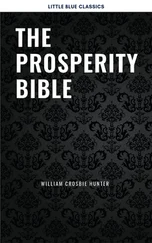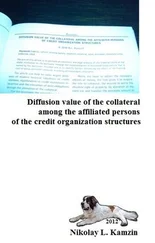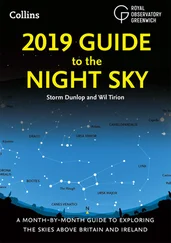We are going to die, and that makes us the lucky ones. Good writing starts strong. Not with a cliché (“Since the dawn of time”), not with a banality (“Recently, scholars have been increasingly concerned with the question of …”), but with a contentful observation that provokes curiosity. The reader of Unweaving the Rainbow opens the book and is walloped with a reminder of the most dreadful fact we know, and on its heels a paradoxical elaboration. We’re lucky because we’ll die? Who wouldn’t want to find out how this mystery will be solved? The starkness of the paradox is reinforced by the diction and meter: short, simple words, a stressed monosyllable followed by six iambic feet.*
Most people are never going to die. The resolution to the paradox—that a bad thing, dying, implies a good thing, having lived—is explained with parallel constructions: never going to die … never going to be born. The next sentence restates the contrast, also in parallel language, but avoids the tedium of repeating words yet again by juxtaposing familiar idioms that have the same rhythm: been here in my place … see the light of day.
the sand grains of Arabia. A touch of the poetic, better suited to the grandeur that Dawkins seeks to invoke than a colorless adjective like massive or enormous. The expression is snatched from the brink of cliché by its variant wording ( sand grains rather than sands ) and by its vaguely exotic feel. The phrase sands of Arabia , though common in the early nineteenth century, has plunged in popularity ever since, and there is no longer even a place that is commonly called Arabia; we refer to it as Saudi Arabia or the Arabian Peninsula. 4
unborn ghosts. A vivid image to convey the abstract notion of a mathematically possible combination of genes, and a wily repurposing of a supernatural concept to advance a naturalistic argument.
greater poets than Keats, scientists greater than Newton. Parallel wording is a powerful trope, but after dying and being born, being here in my place and seeing the light of day, enough is enough. To avoid monotony Dawkins inverts the structure of one of the lines in this couplet. The phrase subtly alludes to another meditation on unrealized genius, “Some mute inglorious Milton here may rest,” from Thomas Gray’s “Elegy Written in a Country Churchyard.”
In the teeth of these stupefying odds. The idiom brings to mind the menacing gape of a predator, reinforcing our gratitude for being alive: to come into existence we narrowly escaped a mortal threat, namely the high odds against it. How high? Every writer faces the challenge of finding a superlative in the English word-hoard that has not been inflated by hyperbole and overuse. In the teeth of these incredible odds? In the teeth of these awesome odds? Meh. Dawkins has found a superlative—to render into a stupor, to make stupid—that still has the power to impress.
Good writing can flip the way the world is perceived, like the silhouette in psychology textbooks which oscillates between a goblet and two faces. In six sentences Dawkins has flipped the way we think of death, and has stated a rationalist’s case for an appreciation of life in words so stirring that many humanists I know have asked that it be read at their funerals.

What is it that makes a person the very person that she is, herself alone and not another, an integrity of identity that persists over time, undergoing changes and yet still continuing to be—until she does not continue any longer, at least not unproblematically?
I stare at the picture of a small child at a summer’s picnic, clutching her big sister’s hand with one tiny hand while in the other she has a precarious hold on a big slice of watermelon that she appears to be struggling to have intersect with the small o of her mouth. That child is me. But why is she me? I have no memory at all of that summer’s day, no privileged knowledge of whether that child succeeded in getting the watermelon into her mouth. It’s true that a smooth series of contiguous physical events can be traced from her body to mine, so that we would want to say that her body is mine; and perhaps bodily identity is all that our personal identity consists in. But bodily persistence over time, too, presents philosophical dilemmas. The series of contiguous physical events has rendered the child’s body so different from the one I glance down on at this moment; the very atoms that composed her body no longer compose mine. And if our bodies are dissimilar, our points of view are even more so. Mine would be as inaccessible to her—just let her try to figure out [Spinoza’s] Ethics —as hers is now to me. Her thought processes, prelinguistic, would largely elude me.
Yet she is me, that tiny determined thing in the frilly white pinafore. She has continued to exist, survived her childhood illnesses, the near-drowning in a rip current on Rockaway Beach at the age of twelve, other dramas. There are presumably adventures that she—that is that I—can’t undergo and still continue to be herself. Would I then be someone else or would I just no longer be? Were I to lose all sense of myself—were schizophrenia or demonic possession, a coma or progressive dementia to remove me from myself—would it be I who would be undergoing those trials, or would I have quit the premises? Would there then be someone else, or would there be no one?
Is death one of those adventures from which I can’t emerge as myself? The sister whose hand I am clutching in the picture is dead. I wonder every day whether she still exists. A person whom one has loved seems altogether too significant a thing to simply vanish altogether from the world. A person whom one loves is a world, just as one knows oneself to be a world. How can worlds like these simply cease altogether? But if my sister does exist, then what is she, and what makes that thing that she now is identical with the beautiful girl laughing at her little sister on that forgotten day?
In this passage from Betraying Spinoza, the philosopher and novelist Rebecca Newberger Goldstein (to whom I am married) explains the philosophical puzzle of personal identity, one of the problems that engaged the Dutch-Jewish thinker who is the subject of her book. 5Like her fellow humanist Dawkins, Goldstein analyzes the vertiginous enigma of existence and death, but their styles could not be more different—a reminder of the diverse ways that the resources of language can be deployed to illuminate a topic. Dawkins’s could fairly be called masculine, with its confrontational opening, its cold abstractions, its aggressive imagery, its glorification of alpha males. Goldstein’s is personal, evocative, reflective, yet intellectually just as rigorous.
at least not unproblematically. The categories of grammar reflect the building blocks of thought—time, space, causality, matter—and a philosophical wordsmith can play with them to awaken her readers to metaphysical conundrums. Here we have an adverb, unproblematically, modifying the verb continue, an ellipsis for continue to be . Ordinarily to be is not the kind of verb that can be modified by an adverb. To be or not to be—it’s hard to see shades of gray there. The unexpected adverb puts an array of metaphysical, theological, and personal questions on the table before us.
a big slice of watermelon that she appears to be struggling to have intersect with the small o of her mouth. Good writing is understood with the mind’s eye. 6The unusual description of the familiar act of eating in terms of its geometry—a piece of fruit intersecting with an o —forces the reader to pause and conjure a mental image of the act rather than skating over a verbal summary. We find the little girl in the photograph endearing not because the author has stooped to telling us so with words like cute or adorable but because we can see her childlike mannerisms for ourselves—as the author herself is doing when pondering the little alien who somehow is her. We see the clumsiness of a small hand manipulating an adult-sized object; the determination to master a challenge we take for granted; the out-of-sync mouth anticipating the sweet, juicy reward. The geometric language also prepares us for the prelinguistic thinking that Goldstein introduces in the next paragraph: we regress to an age at which “to eat” and even “to put in your mouth” are abstractions, several levels removed from the physical challenge of making an object intersect with a body part.
Читать дальше













